Purchasing wholesale products can be an essential strategy for businesses of all sizes, from small mom-and-pop shops to large corporations. Buying wholesale allows businesses to access a wider range of products at lower costs, which can ultimately lead to increased profits and growth opportunities. However, the process of buying wholesale can seem daunting and complex, especially for those new to the industry. In this guide, we will provide you with everything you need to know about how to buy wholesale successfully.
What is Wholesale Buying, and What Are the Benefits?
Wholesale purchasing involves buying products in bulk directly from the manufacturer or distributor at a discounted price, often for the purpose of resale. This is in contrast to retail purchasing, where products are bought in smaller quantities and at higher prices for individual consumers.
There are several benefits to buying wholesale, including:
- Cost savings: By purchasing in bulk, businesses can often negotiate lower prices and save money on each unit of product.
- Bulk purchases: Buying in bulk allows businesses to stock up on inventory and meet customer demand without constantly having to reorder.
- Access to a wider range of products: Wholesale suppliers often offer a larger variety of products, allowing businesses to diversify and expand their offerings.
How to Buy Wholesale - The Process
Identifying Your Needs
Before diving into wholesale purchasing, it is important to assess your business needs and determine the types of products you need. Understanding precisely what your business needs, in terms of both quantity and quality, will streamline your search for the most suitable suppliers. Consider factors such as your target market's preferences, seasonal variations in product demand, and storage capabilities. This introspection not only guides your product selection but also ensures that your investments directly contribute to your business's growth and customer satisfaction.
Finding Wholesale Suppliers
There are several ways to find wholesale suppliers, including:
- Online directories and trade shows: These resources offer a comprehensive list of wholesale suppliers in various industries.
- Industry contacts and networking: Connecting with other businesses or individuals in your industry can lead to valuable recommendations for reliable and trustworthy suppliers.
- Tips for vetting suppliers: It is important to thoroughly research and vet potential suppliers by checking references, reading reviews, and asking for product samples before committing to a partnership.
The Wholesale Buying Process
Establishing Relationships with Suppliers
Once these suppliers are identified, initiating contact marks the beginning of building a long-term relationship. This phase involves negotiating terms and prices beneficial for both parties and establishing open communication for future orders. A strong relationship with suppliers involves regular updates, understanding each other’s operations, and sometimes compromise.
Placing Orders
Attention to detail is crucial when placing orders. Key aspects include understanding Minimum Order Quantities (MOQs) and lead times. MOQs are the smallest amount of stock a supplier will sell per order, varying between suppliers. Negotiating MOQs is vital for effective inventory management. Knowing lead times, the period from placing an order to receiving it aids in planning inventory needs to avoid shortages or excesses.
Familiarity with delivery schedules also helps anticipate deliveries and organize storage space efficiently. Proactive management in these areas reduces the risk of delays and ensures a steady product flow.
Managing Inventory
Once steady product flow is achieved, you must ensure effective inventory management to maintain cash flow and customer satisfaction. Leveraging technology, like inventory tracking software, provides real-time stock visibility, automates reordering, and offers sales pattern insights. This technology ensures accurate, up-to-date inventory records, minimizing overstocking or stockout risks.
Efficient inventory management ensures optimal stock levels, aligns with sales forecasts, and meets customer demand. Moreover, it allows for better financial planning, resource allocation, and maximized profitability. Mastering inventory management through strategic planning and technology leads to smoother operations, customer satisfaction, and a healthier bottom line.
Legal and Financial Considerations
Obtaining Necessary Licenses and Permits
Before beginning wholesale purchasing, it is essential to obtain any necessary licenses and permits. Typically, this includes a general business license that legitimizes your operation as a legal entity.
Additionally, depending on your business's nature and location, you might be required to obtain a resale certificate. This certificate allows you to purchase goods without paying sales tax, on the condition that the products will be resold in the normal course of business. The specific requirements vary by region and industry, so it is important to research and understand the obligations relevant to your business to avoid any legal complications down the line.
Setting Up Payment Terms and Methods
Navigating the financial aspects of wholesale purchasing is equally important. Familiarizing yourself with common payment terms is a key component of managing cash flow effectively. For instance, Net 30 terms mean that the payment for goods received is due within 30 days, allowing businesses some leeway to sell inventory before payment is due. Understanding these terms helps in planning and budgeting, ensuring that your business maintains a healthy cash flow.
In addition to understanding payment terms, exploring financing options for large orders can be beneficial. Trade credit is one such option, where the supplier agrees to allow the purchaser to pay for the goods after they have been sold, typically within an agreed timeframe.
Best Practices for Successful Wholesale Buying
Building Long-Term Supplier Relationships
Maintaining strong relationships with suppliers is key to successful wholesale purchasing. Clear communication and reliability can lead to better terms and discounts over time.
Staying Informed About Market Trends
It is important for businesses to stay informed about market trends, as this can impact product demand and availability. Continuous research and education can help businesses adapt and make strategic purchasing decisions.
Leveraging Technology
Using technology such as order management software and e-commerce platforms can streamline the wholesale buying process and help businesses expand sales channels.
Common Challenges and Solutions
While wholesale purchasing has many benefits, it also comes with its own set of challenges. Some common challenges and solutions include:
- Dealing with backorders and out-of-stock items: Businesses need to have a plan in place for how to handle these situations, such as finding alternative suppliers or pre-ordering products in high demand.
- Handling defective or damaged goods: This may require negotiations with the supplier for refunds or replacements and implementing quality control processes to prevent future issues.
- Navigating international shipping and customs: Businesses should be aware of any additional costs and regulations when ordering from international suppliers, including import taxes and duties. Using a freight forwarder or customs broker can help simplify this process.
Final Thoughts
Buying wholesale can be a profitable and beneficial strategy for businesses, but it requires careful planning, research, and relationship-building. By understanding the process and implementing best practices, businesses can successfully navigate the world of wholesale purchasing and see growth and success in their operations.
Remember to always stay informed about industry trends and adapt to changes, while maintaining strong supplier relationships and effectively managing inventory. So, if you are a business owner looking to expand your offerings and save money on product costs, consider incorporating wholesale purchasing into your strategy. With the right approach and resources, it can be a valuable tool for success in today's competitive market.
Need additional capital to achieve your business goals in 2024? How about capital that is zero interest? Fund&Grow has been helping entrepreneurs - just like you - access business funding since 2007, generating over $1.7 billion for 30,000+ business owners. Check out our free business funding resource to learn how you can access the funding you need to stock up on inventory, invest in marketing, scale operations, or pay for any other business expense you have without paying interest, risking your assets as collateral, or compiling financial documentation.
Popular Posts
Instantly Pre-Qualify
Want Actionable Information, Tools and Resources To Quickly Acquire Business Capital, Credit and Funding?
I take tremendous pride in building positive and lasting relationships in my businesses and personal life. Every member of my team is committed to helping our clients get the maximum amount of funding possible and achieve their highest growth potential.



 Share
Share









